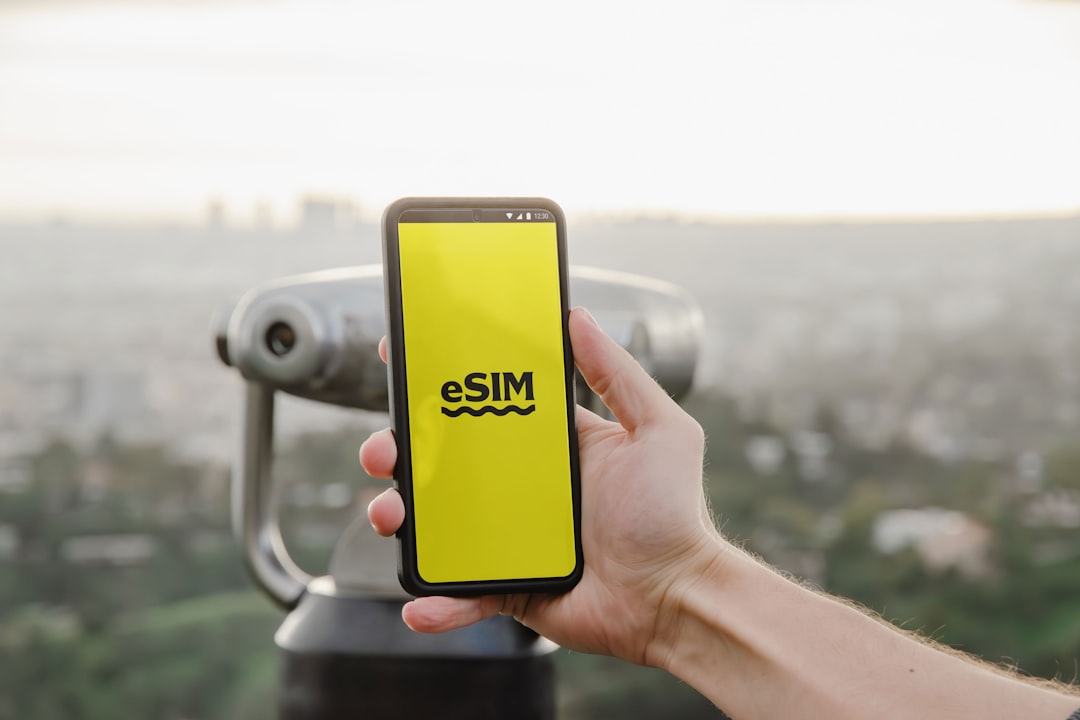Lisbon to Tallinn A Nomad’s Guide to Europe

Introduction
Lisbon and Tallinn may seem like opposite ends of the European map, but they share a growing reputation among digital nomads. One city basks in Mediterranean sunshine, pastel‑coloured tiles and a laid‑back vibe, while the other offers medieval charm, crisp Baltic air and a thriving tech scene. This guide walks you through the entire journey from Portugal’s capital to Estonia’s jewel, highlighting why each stop matters, how to move between them, and what to expect once you set up shop. Whether you are planning a single‑city stay, a multi‑city circuit or a full‑scale relocation, the information below will help you turn the Lisbon‑to‑Tallinn route into a smooth, productive and unforgettable nomadic adventure.
Why Lisbon and Tallinn Belong on a Nomad Itinerary
Lisbon’s Pull
Lisbon has become a magnet for remote workers thanks to its affordable cost of living, reliable Wi‑Fi, and vibrant community. The city’s nine hills provide endless photo opportunities, while the proximity to beaches such as Cascais and the surf‑friendly Costa da Caparica give you a chance to swap a laptop for a board at the end of the day. Portuguese hospitality, a relatively easy visa regime for EU citizens and a growing number of coworking hubs make the city an ideal launchpad for a European nomad circuit.
Tallinn’s Appeal
Tallinn, on the other hand, blends historic cobblestones with a forward‑thinking digital infrastructure. Estonia pioneered e‑residency and offers one of the most streamlined processes for registering a business online. The city’s tech‑savvy population, low corporate tax rates, and a plethora of startup events create an environment where you can both work and network. Winter evenings are lit by the glow of medieval lanterns, and the nearby islands provide tranquil retreats when you need a break from the urban buzz.
Together, these two cities give you a taste of Southern warmth and Northern efficiency, making the Lisbon‑to‑Tallinn corridor a micro‑cosm of what Europe can offer the modern remote professional.
Planning the Route: Transportation Options
Flights
The quickest way to jump from Lisbon to Tallinn is by air. Direct flights are rare, but several airlines operate one‑stop connections through hubs such as Frankfurt, Amsterdam or Warsaw. A typical itinerary lasts around 5–7 hours total travel time, including layover. Booking 2–3 months in advance usually secures the best fares, especially during the shoulder seasons of spring and autumn.
Trains and Buses
If you prefer to see more of the continent, consider a mixed train‑bus journey. The European rail network connects Lisbon to major hubs like Madrid, Paris and Berlin. From Berlin, a night train or an intercity bus can take you to Tallinn via Riga. While this option stretches the travel time to 30–35 hours, it offers scenic routes through the Pyrenees, the French countryside and the Baltic coast.
Driving
Renting a car and driving the 3,200‑kilometre stretch is an adventure for those who love road trips. You’ll need to cross several borders, so an international driving permit and appropriate insurance are essential. The route can be broken into manageable legs: Lisbon → Madrid → Bordeaux → Paris → Berlin → Warsaw → Riga → Tallinn. Factor in tolls, fuel costs and ferry fees (the Riga‑Tallinn crossing can be done by ferry or via the Baltics’ road network).
Combining Modes
A popular hybrid approach is to fly from Lisbon to a central European city like Prague, spend a few days working from a coworking space there, then catch a train to Berlin and continue northward by bus to Tallinn. This method balances speed with the chance to explore intermediate destinations without the fatigue of a single long haul.
Visa and Legal Considerations
EU Citizens
If you hold a passport from an EU member state, you can move freely between Portugal and Estonia without any visa requirements. You may stay for an indefinite period, though you should register your residence if you plan to live in Estonia for more than 90 days. The registration process is straightforward and can be completed online through the e‑residency portal.
Non‑EU Citizens
For digital nomads from outside the EU, the Schengen visa rules apply. A short‑stay Schengen visa (type C) permits up to 90 days of travel within any 180‑day window across the entire Schengen zone, which includes both Portugal and Estonia. If you anticipate a longer stay, consider applying for a long‑term national visa in either country. Portugal offers a “D7” passive income visa, while Estonia provides a digital nomad visa that allows up to one year of remote work.
Tax Implications
Working remotely while traveling across borders can create tax complexities. Portugal has a non‑habitual resident (NHR) regime that offers tax benefits for foreign‑sourced income, but you must be a tax resident for at least 183 days a year to qualify. Estonia taxes corporate income at 0 % for retained profits, making it attractive for freelancers who incorporate a local company. Consulting a cross‑border tax specialist is advisable to avoid double taxation and ensure compliance with both Portuguese and Estonian regulations.
Cost of Living: A Comparative Snapshot
| Expense | Lisbon | Tallinn |
|---|---|---|
| Average monthly rent (1‑bedroom city centre) | €1,200 | €950 |
| Coworking desk (monthly) | €150 | €120 |
| Public transport pass (monthly) | €45 | €30 |
| Meal at a mid‑range restaurant | €15 | €13 |
| Grocery basket (basic items) | €250 | €220 |
| Average utilities (electricity, heating, internet) | €120 | €110 |
Lisbon tends to be slightly more expensive in housing, but both cities remain affordable compared to Western European capitals like London or Paris. The lower rent in Tallinn can offset the cooler climate, especially if you plan to stay during the winter months when heating costs rise.
Finding the Perfect Workspace
Lisbon Coworking Highlights
- Second Home Lisboa – Located in the historic Alfama district, this space blends traditional Portuguese tiles with modern office furniture. High‑speed internet, private phone booths and a rooftop terrace make it a favorite among creatives.
- Heden – A community‑driven hub in the Parque das Nações area, offering flexible membership plans, a meditation room and weekly networking events focused on tech and sustainability.
- LxFactory – Set within a converted industrial complex, LxFactory hosts a variety of desks, meeting rooms and event spaces. The onsite café serves locally roasted coffee and a rotating menu of Portuguese pastries.
Tallinn Coworking Highlights
- Lift99 – Situated in the creative district of Kristiine, Lift99 provides a sleek, minimalist environment with abundant natural light. Their “startup accelerator” program connects freelancers with investors and mentors.
- CoWork Hub – Located near the Old Town, this space offers a blend of historic architecture and modern amenities. Private offices are available for those who need a quieter setting, and the on‑site kitchen serves hearty Estonian soups.
- Spring Hub – A newer entrant in the Kalamaja neighbourhood, Spring Hub focuses on sustainability, featuring recycled furniture and a green roof garden where you can work outdoors during summer.
Choosing Between Them
When selecting a coworking space, consider the following criteria:
- Proximity to your accommodation or favourite neighbourhood
- Availability of meeting rooms if you need client calls or presentations
- Community vibe – some spaces are more startup‑centric, others cater to freelancers and digital artists
- Extra perks such as free coffee, workshops, or social events
Most spaces offer a trial day or a week‑long pass, so it’s worth testing a couple before committing to a monthly plan.
Accommodation Options
Short‑Term Rentals
Both cities have thriving Airbnb markets. In Lisbon, neighborhoods like Bairro Alto, Principe Real and Santos provide easy access to coworking hubs and nightlife. In Tallinn, stay in the Old Town for a medieval atmosphere, or choose Kalamaja for a more relaxed, residential feel.
Serviced Apartments
If you prefer a more hotel‑like experience with kitchen facilities, serviced apartments are plentiful. Brands such as Mövenpick Residences in Lisbon and Novotel Tallinn offer monthly rates that include cleaning services and utilities.
Hostels and Co‑Living
Hostels such as Lisbon Destination Hostel (located in a former train station) and Tallinn Backpackers offer private rooms at budget‑friendly prices, often with communal kitchens and lounge areas. Co‑living communities like Outsite now have locations in both cities, providing a blend of private sleeping pods and shared coworking zones – ideal for nomads seeking a built‑in network.
Food and Drink: Local Flavours for Remote Workers
Lisbon’s Culinary Scene
- Pastéis de Nata – The iconic custard tart is a must‑try. Grab one from Pastéis de Belém and enjoy it with a strong espresso.
- Bifana – A pork sandwich spiced with paprika and garlic, perfect for a quick lunch between meetings.
- Seafood – Head to Cervejaria Ramiro for succulent crab and prawns, served with a cold Portuguese beer.
Lisbon’s food markets, like Mercado da Ribeira, offer fresh produce, cheese and ready‑to‑eat dishes that are ideal for meal‑prepping.
Tallinn’s Culinary Scene
- Kohuke – A sweet cheese curd snack coated in chocolate, often found in grocery stores.
- Verivorst – Blood sausage served with lingonberries; a traditional dish enjoyed during festive seasons.
- Rye Bread – Dark, dense rye loaves are a staple, often paired with smoked fish or local cheeses.
Tallinn’s Balti Jaama Turg (Baltic Market) is a bustling food hall where you can sample Estonian delicacies, craft beers and vegan options. Many coworking spaces host “lunch clubs” where members share home‑cooked meals, fostering community through food.
Lifestyle and Recreation
Outdoor Activities
- Lisbon – Surf at Carcavelos, hike the Sintra‑Cascais Natural Park, or take a sunset sail on the Tagus River.
- Tallinn – Cycle along the Pirita promenade, paddleboard on the Baltic Sea, or explore the extensive network of forest trails just outside the city.
Both cities offer bike‑share programs; Lisbon’s Gira and Tallinn’s CityBike make it easy to commute sustainably.
Cultural Highlights
- Lisbon – Visit the Jerónimos Monastery, the Belém Tower, and the Calouste Gulbenkian Museum. Attend a Fado night in Alfama to experience Portugal’s soulful music.
- Tallinn – Wander through the UNESCO‑listed Old Town, explore the Kumu Art Museum, and attend the Tallinn Music Week festival, which showcases indie and electronic acts from across Europe.
Nightlife
Lisbon’s nightlife thrives in the Bairro Alto and Cais do Sodré districts, where bars stay open until the early hours. Tallinn’s evening scene centres around the Telliskivi Creative City and the Rotermann Quarter, offering craft cocktails, live DJ sets and rooftop terraces.
Networking and Community
Meetups and Events
- Lisbon – The Lisbon Tech Hub organizes weekly meetups on topics ranging from AI to digital marketing. Nomad Summit Lisbon is an annual gathering of remote workers from around the world.
- Tallinn – Startup Estonia hosts monthly pitch nights, while Digital Nomad Tallinn runs informal coffee meetups and skill‑share workshops.
Joining these groups not only expands your professional network but also provides opportunities for collaboration and mentorship.
Online Platforms
Platforms such as Nomad List, Remote OK, and Workfrom have city‑specific channels where members share coworking reviews, housing tips and event announcements. Engaging in these forums before you arrive can help you secure a desk or an apartment before you set foot in the city.
Connectivity: Internet, Mobile and Banking
Internet Speed
- Lisbon averages 120 Mbps download speeds across most coworking spaces and cafés.
- Tallinn boasts an average of 150 Mbps, with many public libraries offering free high‑speed Wi‑Fi.
Both cities have reliable fiber networks, ensuring seamless video calls and large file transfers.
Mobile Data
Purchase a prepaid SIM card upon arrival. In Portugal, MEO and Vodafone offer 30‑day plans with 30 GB of data for around €15. In Estonia, Telia and Elisa provide similar packages, often including EU roaming at no extra cost.
Banking and Payments
Both countries are part of the SEPA zone, making euro transfers instantaneous and free. For non‑EU citizens, opening a local bank account can be beneficial for receiving payments and avoiding foreign transaction fees. Estonia’s e‑residency program allows you to set up a digital bank account online, while Portugal’s Banco CTT offers simple account opening procedures for foreigners with a passport and proof of address.
Health and Safety
Healthcare Access
- Lisbon – Public healthcare (SNS) is available to EU residents, and private clinics offer English‑speaking doctors. Emergency services are reachable via 112.
- Tallinn – Estonia’s public health system provides high‑quality care, with many practitioners fluent in English. Private clinics such as Medicover offer same‑day appointments.
Travel insurance that covers both countries is advisable, especially if you plan to engage in outdoor activities like surfing or snowshoeing.
Safety
Both cities rank highly on global safety indexes. Pickpocketing can occur in tourist‑heavy areas such as Lisbon’s Rossio Square or Tallinn’s Town Hall Square, so keep valuables secure and stay aware of your surroundings. Nighttime public transport is well‑lit and generally safe, but it’s wise to use reputable ride‑hailing services if you feel uncomfortable walking alone.
Productivity Hacks for the Lisbon‑to‑Tallinn Trail
- Time‑zone Management – Lisbon operates on Western European Time (UTC+0) while Tallinn is on Eastern European Time (UTC+2). Schedule client calls during overlapping windows (e.g., 10 am Lisbon / 12 pm Tallinn) to maintain consistent communication.
- Routine Consistency – Establish a morning ritual that travels with you: a short meditation, a coffee at a local café, and a review of daily tasks. This anchors your workday regardless of the city’s ambience.
- Local Power Outlets – Both Portugal and Estonia use the Europlug (type C) with a standard voltage of 230 V. Carry a compact universal adapter and a spare power strip to avoid disruptions at shared desks.
- Digital Backups – Store critical files in cloud services that have data centres in both EU regions, such as Google Drive or Microsoft OneDrive, ensuring fast access and compliance with GDPR.
Budgeting the Journey
Below is a sample month‑by‑month budget for a solo digital nomad moving from Lisbon to Tallinn, assuming a 3‑month stay in each city.
| Category | Lisbon (Monthly) | Tallinn (Monthly) |
|---|---|---|
| Rent (1‑bedroom) | €1,200 | €950 |
| Coworking desk | €150 | €120 |
| Food (groceries + eating out) | €350 | €300 |
| Transport (public + occasional rideshare) | €45 | €30 |
| Mobile & Internet | €30 | €30 |
| Leisure & Events | €200 | €180 |
| Miscellaneous | €100 | €100 |
| Total | €2,275 | €1,730 |
Adjust the figures based on personal preferences, such as opting for a shared apartment, cooking more at home, or attending premium networking events.
Practical Tips for a Smooth Transition
- Notify Your Landlord – If you’re renting long‑term in Lisbon, give at least 30 days notice before moving. Some landlords may allow subletting, which can offset costs.
- Transfer Mail – Set up a mail forwarding service or use a virtual mailbox (e.g., Travelling Mailbox) to receive important documents while on the road.
- Pack Light, Pack Smart – Lisbon’s climate is mild, while Tallinn can be chilly in winter. Include a versatile waterproof jacket, a warm sweater, and a pair of comfortable walking shoes that work for both city streets and outdoor trails.
- Learn Basic Phrases – Portuguese greetings (“Bom dia”, “Obrigado”) and Estonian basics (“Tere”, “Aitäh”) go a long way in building rapport with locals.
- Secure Your Devices – Use a VPN when connecting to public Wi‑Fi, and enable two‑factor authentication on all critical accounts.
Sustainable Nomadism: Reducing Your Footprint
Traveling across Europe offers an opportunity to adopt greener habits:
- Choose train travel for intermediate legs where possible; rail emits significantly less CO₂ than short‑haul flights.
- Bring a reusable water bottle and coffee cup to avoid single‑use plastics in cafés.
- Support local businesses by purchasing food, souvenirs and services from small, independent providers.
- Offset any unavoidable flights through reputable carbon‑offset programs that invest in renewable energy or reforestation projects.
By integrating these practices, you contribute to preserving the environments that make Lisbon and Tallinn such attractive destinations.
Closing Thoughts
The journey from Lisbon to Tallinn encapsulates the diversity, flexibility and excitement that define the modern digital nomad lifestyle. From sun‑kissed terraces overlooking the Atlantic to medieval streets illuminated by winter snow, you can blend work and exploration without sacrificing productivity. With reliable internet, thriving coworking communities, affordable living costs and welcoming locals, both cities provide the infrastructure you need to thrive as a remote professional.
Plan your route, secure your visas, pick a coworking space that matches your vibe, and let the contrast between Portuguese warmth and Baltic crispness inspire your next project. Europe’s nomadic corridor is waiting – all you have to do is take the first step.
Random Posts

Nomadic Minimalism and Green Travel Building a Sustainable Community
Discover how stripping down to essentials and traveling responsibly can unite digital nomads into low impact, resource sharing communities that protect the planet and enrich local cultures.
1 month ago

Essential Resources To Launch Your Nomad Journey
Discover the essential tools and guides to kickstart your nomad life, from defining your travel style to the best apps, blogs, and coworking spaces, so you can launch confidently and thrive on the move.
4 weeks ago

Minimalist Nomad Living Sustainable Travel with Light Packing
Travel light, think small: Minimalist nomad living frees mind, cuts waste and costs, and turns every journey into a sustainable adventure.
3 weeks ago

Nomad Lifestyle Secrets Top Spots with Low Cost of Living and Easy Entry
Discover the best nomad hotspots where affordable living meets hassle-free visas, so you can work from sun-lit cafés or mountain lofts without breaking the bank or getting stuck in red tape
3 days ago

How to Stay Compliant While Working Anywhere
Learn how to stay tax compliant as a digital nomad: master residency rules, filing duties, record keeping and multicountry coordination so you can work from anywhere without penalties
2 months ago
Latest Posts

Essential Software Every Remote Professional Should Use
Master remote work with essential tools: instant messaging like Slack, high definition video calls such as Zoom, and asynchronous voice apps. Streamline communication, stay connected and boost productivity.
1 day ago

Mastering Remote Work Productivity for Digital Nomads and Freelancers
Learn proven habits, tools, and tactics that help digital nomads and freelancers stay focused, deliver quality work, and maintain a sustainable lifestyle while traveling the world.
1 day ago

Tech‑Friendly European Towns Perfect for Remote Living
Discover Europe’s best small towns where fast internet, affordable living and vibrant tech communities let you work remotely while soaking up historic charm, lakeside views or mountain air.
1 day ago